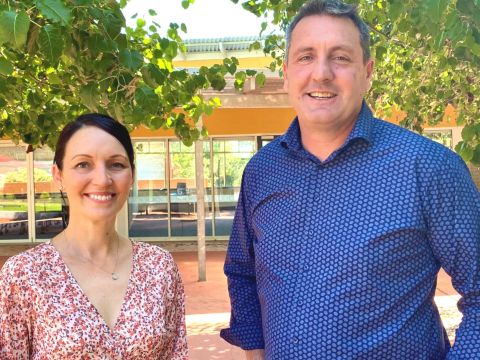- The Charles Sturt University Collaborative Teacher’s Aide Pathway (CTAP) has received a $500,000 grant from the NSW Government which will add to the number of qualified teachers in the pipeline, in accelerated time
- The pathway reduces the time taken to become a qualified teacher by recognising the skills and experience already attained by teacher’s aides and other classroom support personnel
As Australian education Ministers meet on Friday to address the national teacher shortage crisis, Charles Sturt University has 145 job-ready teaching students on a pathway to filling this critical gap, with many more coming via a $500,000 grant to expand the program.
The ground-breaking program, the Collaborative Teacher’s Aide Pathway (CTAP), has been designed to fast-track the teaching qualifications of teachers’ aides and other classroom support personnel by recognising their skills from time spent in the classroom and previous study.
Following this pathway, the Charles Sturt Bachelor of Educational Studies/ Master of Teaching degree pathway can be completed online in as little as two or three years (depending on credit), while enabling teachers’ aides to continue employment at their current school in the same capacity. Students have the option of studying full-time or part-time, from anywhere in Australia.
Under the grant funding, these students will be given vital financial support to overcome barriers associated with juggling work, study and family commitments, maximising their prospects of graduating and buttressing Australia’s depleted teaching workforce.
Charles Sturt Vice-Chancellor, Professor Renée Leon, said the CTAP program - developed in partnership with TAFE NSW, Regional Development Australia and NSW regional school stakeholders - is a largely overlooked solution to one of the nation’s most critical skills shortages.
“The Collaborative Teacher’s Aide Pathway is providing an immediate response to the national crisis the Australian education system is experiencing when it comes to the shortage in the teaching workforce,” Professor Leon said.
“Charles Sturt is proud of its record of producing high-quality teaching graduates that meet the educational needs of Australian school students.
“In recent years the University has graduated more than 900 teachers per year into the education workforce. Under this program and at a time when teachers are desperately needed, that number will only grow.”
Senior Lecturer with the Charles Sturt School of Education Dr Libbey Murray said the program had received an overwhelming response from both prospective students and principals since its inception.
“Enrolments have surpassed our expectations, with 145 students already enrolled in the three university sessions for 2022,” Dr Murray said.

The CTAP has attracted students from across Australia and has achieved a high retention rate from the session one 2022 cohort.
“Our first semester cohort have done extremely well in their studies so far, with a 90 per cent retention rate in the course, and many achieving distinctions and high distinctions in their subjects,” Dr Murray said.
“Some schools have multiple teachers’ aides enrolled who are supporting each other through the course, which is great to see.”
Dr Murray said the grant funding would provide vital financial support to assist students enrolled in the program to help manage work, study, and family commitments.
“The $500,000 under the NSW Government’s Collaboration and Innovation Fund will be instrumental in supporting students to complete their studies, while maintaining the critical work they already do in schools, and juggling personal and family lives,” Dr Murray said.
“It will go towards known barriers to student success; the costs involved with professional experience placements, supporting students’ enrolment and transition into study, ongoing academic and retention support, and further research around retention and pathway success.
Previous vocational qualifications, as well as primary and secondary experience in schools is recognised. Students can specialise in primary or secondary teaching and in a key learning area or major teaching area of their choice.
Examples of previous study where credit can be obtained include having a Certificate III or IV of Education Support, or a Diploma of School Age Education and Care, which accelerates and supports student’s completion of a primary or secondary teaching degree. Students can receive up to two years of credit for previous study.
Dr Murray said most teachers’ aides are receiving one year of credit upon enrolment.
“The pathway turns a four-year pathway into a three-year pathway for most, which not only cuts down the time students have to study, and the cost involved in that, but helps our dedicated teachers’ aides to be employed as classroom teachers sooner,” she said.
The CTAP is available to students across Australia. Students choose the school sector and key learning area they want to specialise in, and Charles Sturt assists each student to build the right degree tailored to their strengths and interests.
Students have access to high-level academic support from Charles Sturt staff throughout their studies, as well as the use of the University campus and online library facilities which are available 24 hours a day, seven days a week.
Enrolments for the Charles Sturt Bachelor of Educational Studies/ Master of Teaching pathway are now open. To enrol or find out more, contact Charles Sturt University Admissions via Ask@csu.edu.au.
ENDS






Social
Explore the world of social